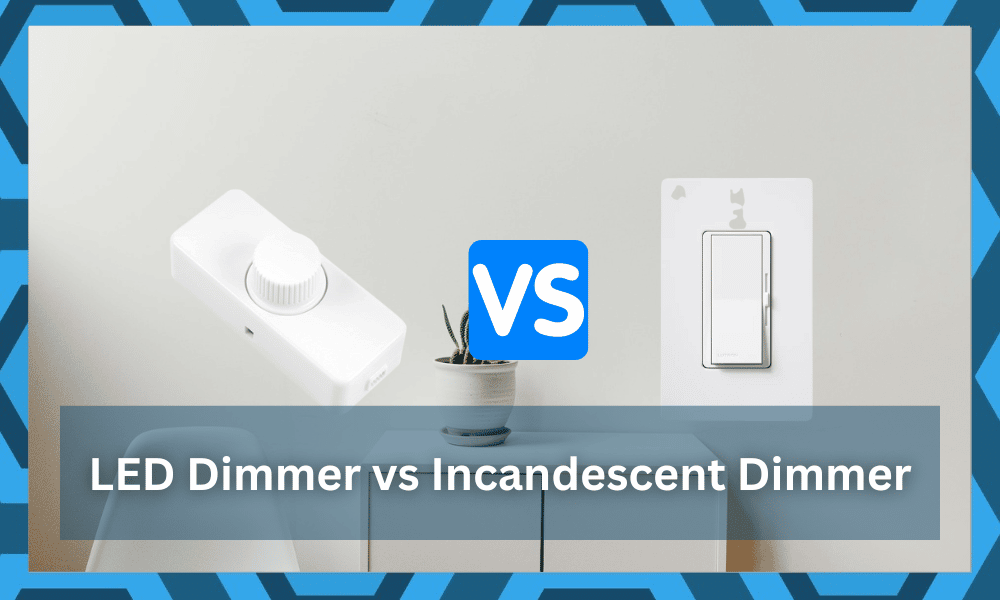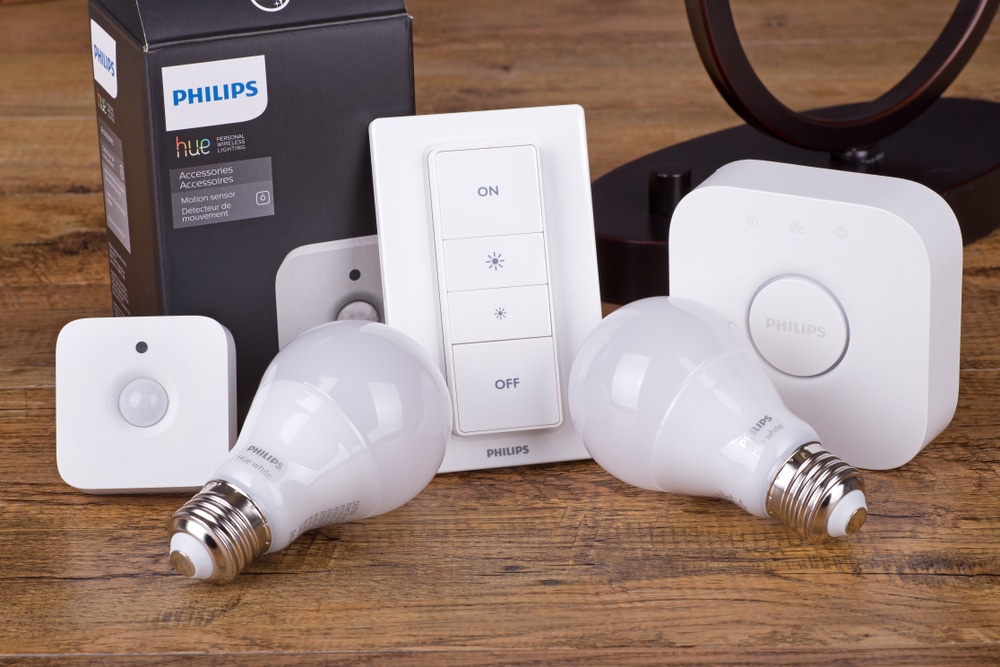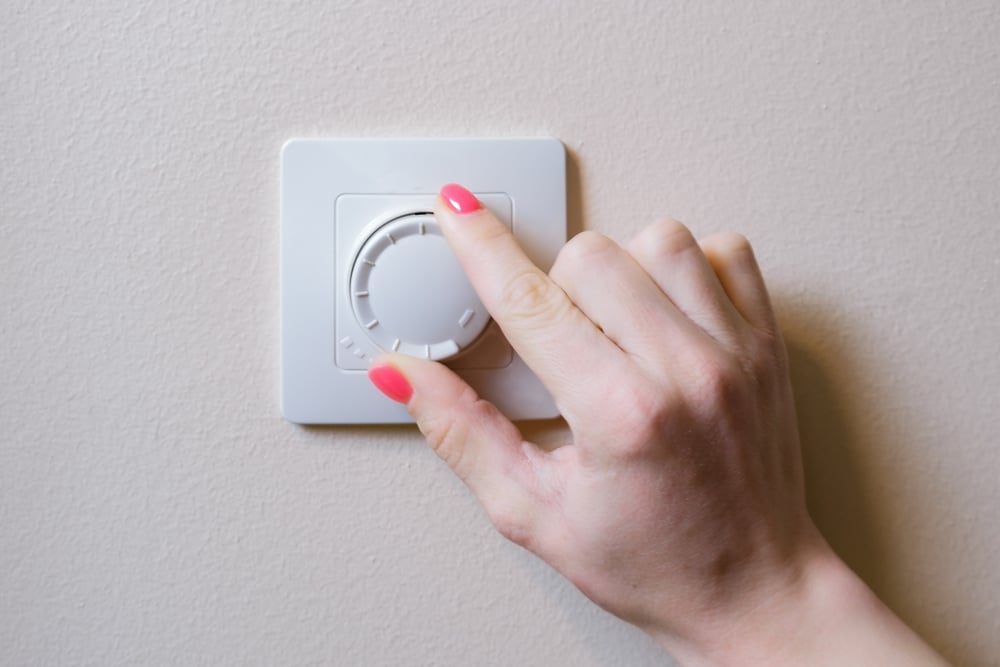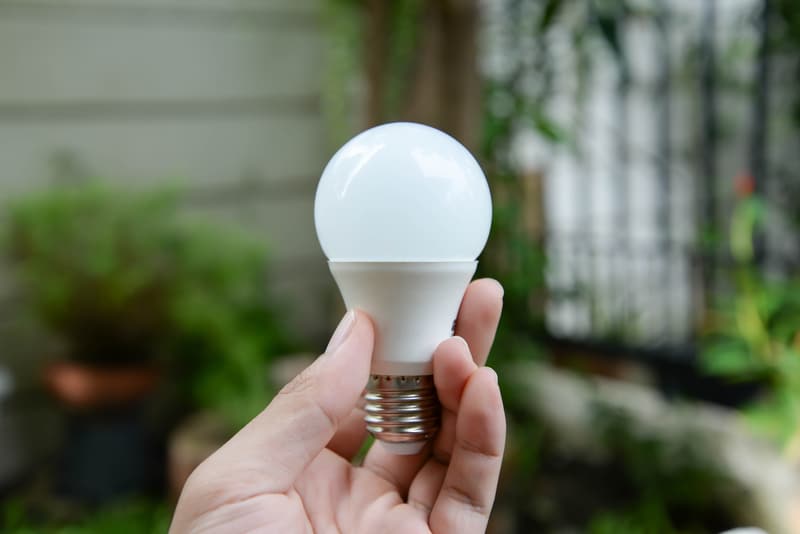
There are different types of smart switches available that you can use in line with your smart lights. After installation, you can gain remote access to the lights connected to these smart switches.
These smart switches are more expensive but can provide you convenience in the form of remote access. As long as you’re going with a reliable brand, you won’t have to replace the smart switches for several years.
Depending upon which type of light bulb you’ve installed in your home you can either use an LED dimmer or an incandescent dimmer switch.
Here are a few differences between the two types of dimmers and why it’s important to install a compatible dimmer.
LED Dimmer vs Incandescent Dimmer:
| Specifics | LED Dimmer | Incandescent Dimmer |
| Price Point | 25$ Approx. | 18$ Approx. |
| Functionality | Reducing Uptime | Lowering Voltage |
| Lifespan | 10 Years | 15 Years |
| Compatibility | Limited | Extensive |
| Circuit | Complex | Basic |
There might not be any differences in the basic design or the brand choice when you look at these two options, but there sure are differences when you’re talking about the price point and functionality.
The circuitry in the LED dimmers is much more complex, and these will give out sooner.
Moreover, if you try to use these dimmers with bulbs that are not dimmer compatible, the bulbs will give out in no time.
So, you will have to be much more careful with the LED dimmer when compared with the Incandescent dimmer.
Most owners prefer to go with a local contractor when installing these dimmers.
If you’re not that sure about the dimmer status yourself, then be sure to reach out to a local expert. There is no point in wasting your time trying to adjust the dimmer when you barely know a thing about power connections.
On the other hand, installing an Incandescent dimmer is not that difficult.
Even if you have minimal experience with these units, you can get through the installation in no time. Just make sure to isolate the power to the connections before you mess with the grid.
That way, you will minimize the risk of electrocuting yourself or damaging the device.
However, if you’re not sure about how to do that, then the smarter idea is to call an expert. You shouldn’t focus on saving a few bucks and put yourself and your units at risk.
Spending a few dollars will make sure that you don’t only save yourself from electrocution but also ensure a consistent response from the device.
So, call up your local expert to help you with the installation of the LED dimmer and the Incandescent dimmer.
The following details on the circuitry marinated by both dimmers will further improve your perspective on which unit to choose.
LED Dimmer
Unlike incandescent dimmers, you can’t just reduce the voltage of the LED light bulbs to dim the lights.
Rather these dimmers work to rapidly cut the power flow and then provide it again to the bulb and adjust the time during which the LED bulbs are taking power.
The timing affects how bright the LED bulb is allowed to get, and as you bring down the brightness on the LED dimmer, the switch will reduce the time during which the power is being provided to the bulb.
Hence, you will notice a lower light intensity, and everything will work out.
The color and the glow of the light bulb will remain the same as you dim down the lights. However, it can create a lot of heat, and that is the reason why reliable LED dimmers are so expensive.
Going for a cheap dimmer can also cause safety hazards, and you might damage the whole wiring system if you’ve bought a dimmer from a cheap brand.
Even though the LED lights are pulsing on and off rapidly, the speed of these pulses is so high that our eyes perceive the light coming from the bulbs as constant.
LED dimmers require a complicated electronic circuit, and you can’t just use resistors in line with the dimmer to adjust the lighting on your LED bulbs.
That is why it is important not to put an incandescent dimmer in line with your LED bulbs, as it can’t dim the LED bulbs, and there is a chance that it will damage your lighting system.
There is more going on in the LED light bulb than a simple filament glowing because it is hot.
Incandescent Dimmer
The incandescent dimmer just focuses on dimming the light bulbs by limiting the amount of voltage going into these light bulbs.
The reason is that incandescent light bulbs are just wires that glow. After all, they get hot due to the current flowing in them.
The incandescent dimmer switches use an adjustable resistor in line with the wiring to manage the voltage going into the light bulbs.
You can control this resistor using the switch, and that will allow you to dim the lights according to your liking.
One major difference between the two bulbs is that as you dim the lights on an incandescent bulb, the color or the light and glow will change to a more orange shade.
While in the LED light bulbs, you will still receive that uniform white light coming from the light bulbs at all times.
The incandescent dimmers are more affordable and perfect for you if you use incandescent lighting in your home.
Even though there are some drawbacks, at least you won’t have to spend as much money on changing the dimmer switches in your apartment.
There is nothing complicated about these light bulbs. You’re not turning the bulbs on or off rapidly, instead, you’re just changing the amount of voltage that is available to these bulbs.
By reducing the voltage, you will get a dimmer light from your incandescent bulbs.
LED dimmers use more complicated circuitry and rely on rapidly turning the power flow on and off to manage the intensity of light coming from the light bulbs.
These were the major differences between the two dimmers, and you should always go through the compatibility list before buying a dimmer switch.
That way, you will avoid the hassle of replacing these dimmer switches when they don’t work out for your lighting solutions.
Make sure to only use LED dimmers with LED bulbs to extend the life span of your light bulbs.
Otherwise, you’ll be spending hundreds of dollars on replacing the whole lighting system in your household. Now, that doesn’t sound pleasant to any homeowner, even if they have a decent budget.
Which One Is Better?
There is no such thing as better or worse here. Instead, you need to look at the functionality of the device.
You can’t really use an Incandescent dimmer for your LED bulbs and vice versa. So, there is no point in trying to compare the integrity of these units.
The only thing you need to focus on is that you’re engaging with established brands like Lutron.
While these brands are a bit expensive at first glance, you’ll get more than optimal performance from these devices. From there, it is not that hard to adjust the response from the smart units accordingly.
Along with engaging with an established brand, you need to also make sure that the device is installed by an expert.
You might mess up the wiring which will only create more issues down the road. So, even when engaging with an established brand like Lutron, the importance or expert installation can’t be ignored.
Wrapping Up
These specifics should help you get a clearer perspective on the functionality of the LED dimmers and the Incandescent dimmers.
While many users confuse these two systems, they are very different from one another. You can’t use either one of these dimmers with bulbs that are incompatible.
If you’re confused about any detail, make sure to ask the dealer on the spot.
He will point you in the right direction after you tell him a bit about the bulbs, you’re planning on using them with. From there, it is not that hard to get through the whole step.
There is no shame in asking the experts when you’re confused about any detail. Spending a few minutes on online forums will save you hundreds of bucks in the long run.
So, if you’re new to the market and don’t really want to engage with the dealer, try browsing through online forums.
Either way, your focus should be on seeking expert knowledge. That way, you won’t mess up the installation, and the dimmer will work perfect for your smart bulbs. From there, you will have complete control of your device.
Hopefully, these details will help you pick the right unit for your smart home!



